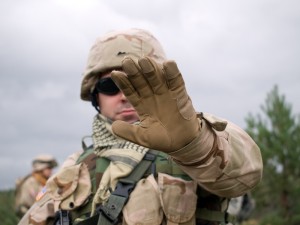 When lawyers and lay people talk about “intellectual property” (IP) they are usually referring to patents, trademarks, copyright, and trade secrets. But IP may consist of other rights including the “right of publicity.”
When lawyers and lay people talk about “intellectual property” (IP) they are usually referring to patents, trademarks, copyright, and trade secrets. But IP may consist of other rights including the “right of publicity.”
The right of publicity refers to those rights related to control of the commercial use of one’s identity typically consisting of a person’s “name, image and likeness.” In Pennsylvania, for example, a person or a group has exclusive right to control the commercial value of his/their name and likeness. Other states have similar laws. The right of publicity overlaps with trademark and unfair competition laws. According toone source, “like a trademark, the Right of Publicity can function as a quality assurance to a consumer, especially if a celebrity, or his or her estate, maintain self – imposed quality standards and exercises discretion in licensing publicity rights.”
There are limits to the right of publicity particularly when it runs up against the First Amendment. Jeffrey Sarver, an Iraqi War veteran, learned this when he sued a journalist, Playboy Magazine, and the producers and director of a recent blockbuster movie,The Hurt Locker. Sarver served in the Explosive Ordinance Disposal unit in the Iraq war from 2004 to 2005. During that time, Mark Boal, a journalist working for Playboy Magazine was embedded with Sarver’s unit. He followed Boal and took photographs and video of him during on-duty and off-duty periods. Sarver’s life was later the subject of an article Boal published in Playboy Magazine, a Reader’s Digestadaptation of that article, and Boal’s Hurt Locker screenplay. Sarver alleged in his lawsuit that he never consented to use of his name to either Playboy magazine or to the producers of Hurt Locker.
In March 2010 Sarver filed a federal lawsuit against Boal, director Kathryn Bigelow and the movie’s producers alleging causes of action for misappropriation of his likeness and right of publicity and other causes of action. The lower court dismissed his complaint on grounds that although the lead character in Hurt Locker was similar to the Plaintiff, there was “significant amount of original expressive content” that the film was protectable under the First Amendment.
On appeal, the United States Circuit Court of Appeals for the Ninth Circuit, held that California law does not protect speech that “appropriates the economic value of a performance or persona or seeks to capitalize on celebrity’s making commercial advertisements.” The question, therefore, was whether Hurt Locker was “commercial speech.” The court concluded it was not because neither the journalist nor the movie producers exploited the economic value of Sarver’s persona; they were just telling a story. The Ninth Circuit court wrote:
The Hurt Locker is speech that is fully protected by the First Amendment, which safeguards the storytellers and artists who take the raw materials of life – – including the stories of real individuals, ordinary or extraordinary – – and transform them into art, the articles, books, movies, or place. If California’s right of publicity law applies in this case, it is simply a content-based speech restriction. As such it is presumptively unconstitutional, and cannot stand unless Sarver can show a compelling state interest in preventing the defendants’ speech. Because Sarver cannot do so, applying California’s right of publicity in this case would violate the First Amendment.
The moral: unless you’re a celebrity whose persona has acquired commercial value (remember, like a trademark), your persona may not be as valuable as you dream.
We will continue to follow this case.
— Adam G. Garson, Esq.

